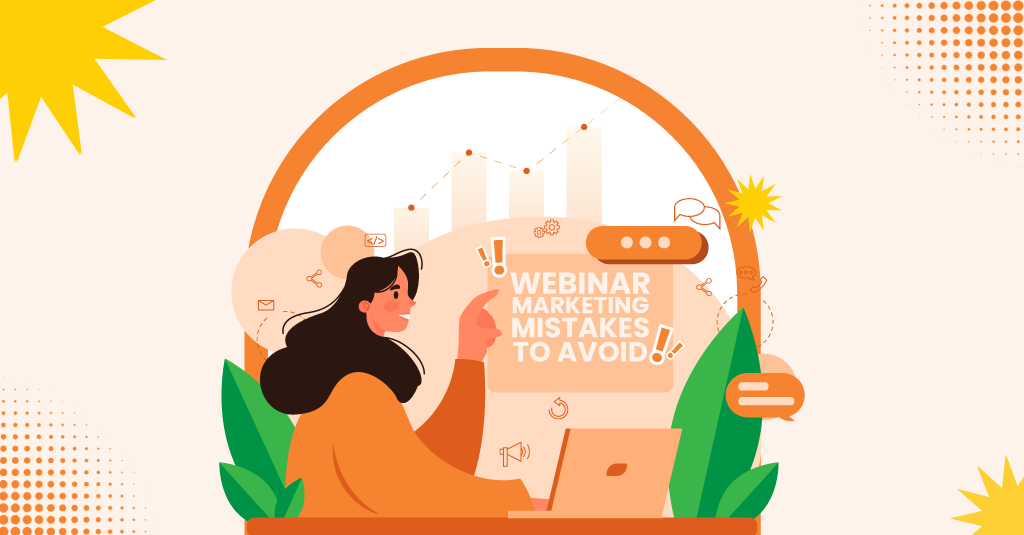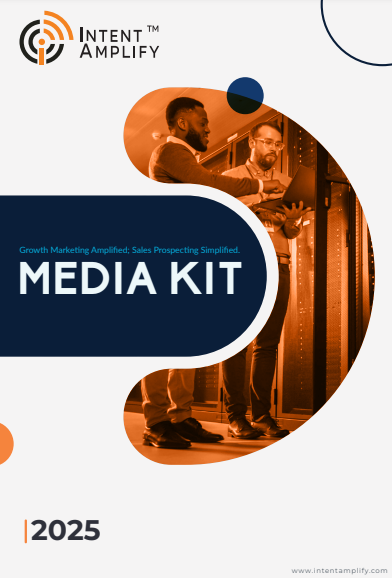
Top 10 Webinar Marketing Mistakes to Avoid in 2025
- Last updated on: July 10, 2025
Webinars are the #2 most effective distribution channel for B2B marketers in 2025, right after in-person events. And it’s no surprise that when done right, webinars attract high-intent leads, position your brand as a thought leader, and nurture prospects deeper into the funnel. But unlocking that value takes more than just a Zoom link and a slide deck. The good news? Most webinar marketing mistakes are easy to fix once you spot them. If you want your team to consistently deliver pipeline impact, avoid these 10 webinar marketing mistakes that smart B2B teams are moving past in 2025.
1. Skipping a Clear Goal for the Webinar
Let’s be honest – if you don’t know why you’re running a webinar, your audience won’t know why they should show up. You can’t afford to treat webinars like just another content format. A webinar without a clear objective becomes just another calendar event, easy to ignore.
Before you create slides or send invites, ask yourself: Are you trying to generate leads? Move MQLs to SQLs? Educate customers? Launch a new product? Each goal demands a different structure, CTA, and follow-up plan. When your team is aligned on the goal, the messaging, flow, and outcomes all become more intentional and far more effective.
Mistake to avoid: “We just want to get people to attend.”
Instead, try: “We want 50 mid-funnel leads to request a demo within 7 days.”
2. Choosing the Wrong Topic for Your Audience
Many webinars fail before they even begin because the topic doesn’t match what the audience cares about. Just because something interests you doesn’t mean it will attract leads or keep attendees engaged. The right topic sets the tone for attendance, participation, and pipeline impact.
In 2025, B2B buyers want actionable insights tied to their specific pain points – not generic overviews. If your topic feels too broad or too promotional, it’s easy to ignore. So, don’t guess. Use data. Dive into intent signals, search trends, previous campaign results, and CRM feedback to find themes that resonate. Use tools like Google Trends to pick topics your ICP is already engaging with. The more aligned your content is with their interests, the more likely they are to sign up and take the next step.
3. Overloading Slides with Too Much Information
Webinar fatigue is real. No one wants to sit through 45 cluttered slides packed with stats, charts, and buzzwords. Overloading your deck can cause attendees to tune out before your key message even lands. Your job is to simplify, clarify, and keep attention focused on value, not volume.
Think of slides as visual cues, not whitepapers. Each one should support your message, not compete with it. Use clean layouts, 5–7 words per line, and one idea per slide. Incorporate visuals where possible, and avoid reading slides word for word. And always let the speaker lead the narrative, not the deck. A confident speaker with strong visuals will always outperform an overdesigned presentation. Remember – People came to hear a person, not read a slide.
4. Failing to Promote the Webinar Properly
“We promoted it on LinkedIn once – why didn’t anyone register?” That’s not a strategy – that’s wishful thinking. Promotion is just as important as the content itself. A great webinar without proper promotion is like a brilliant keynote in an empty room.
Webinar promotion should run like a campaign, with multiple touchpoints across email, social, paid ads, and website CTAs. You need at least a 2-week runway, ideally more, to build interest and momentum. And it’s not just about frequency, it’s about relevance, consistency, and timing.
In 2025, the winning formula is:
- Teaser posts 2–3 weeks in advance
- Email drip with value-driven reminders
- Speaker-led social engagement to boost credibility
- A strong registration page that highlights benefits, not just speaker bios
Make your messaging audience-focused. Show what they’ll gain, not just what you’ll present.
5. Ignoring Mobile Optimization
Yes, B2B buyers use their phones not just casually, but frequently, especially for webinar registration, reminders, and even joining the session itself. Yet many marketers still overlook mobile users. Broken forms, slow-loading pages, and unreadable emails on small screens can sabotage even the most well-planned campaign.
In 2025, mobile responsiveness is no longer optional. Your sign-up experience must be seamless across devices. That means fast-loading landing pages, clear CTAs, and mobile-friendly layouts for emails and confirmation messages. If it takes more than 15 seconds to register on a phone, most users will bounce.
Quick check: Open your registration page and reminder email on your phone right now. Would you register — or leave?
6. Picking the Wrong Time and Day
Not all time slots are created equal. Hosting your webinar at 3 PM on a Friday? Don’t expect decision-makers to show up; they’re likely wrapping up their week or already offline. Timing can make or break attendance rates, no matter how strong your content is.
In 2025, the best B2B webinar time slots remain:
- Tuesday to Thursday — when attention is highest
- Late mornings (10 AM–12 PM) in the audience’s local timezone
Also, consider your ICP’s geography and work culture. If you’re targeting multiple regions, offer a second session or provide on-demand access immediately after. And don’t forget to test different time slots across segments, as what works for one industry might not work for another.
7. Forgetting to Engage the Audience During the Session
Webinars are not lectures. When there’s no interaction, people check out. If your attendees aren’t asking questions or responding to polls, they’re probably multitasking — or already gone. In 2025, passive content doesn’t cut it. Your audience expects to participate, not just observe.
So, what should you do?
- Launch a poll in the first 5 minutes to capture attention
- Ask open-ended questions midway to spark conversation
- Keep Q&A open throughout, not just at the end
- Have a co-host manage the chat and respond in real time
The more your audience interacts, the more likely they are to remember your message and take action afterward. Engagement isn’t optional anymore; it’s the difference between a real lead and a lost contact.
8. Failing to Record and Repurpose the Content
“If you’re not repurposing your webinar, you’re doing double the work for half the results.” – Ross Simmonds, Content Marketer
Once the live webinar ends, the real opportunity begins. Yet so many teams stop after the event, no replay link, no video snippets, no blog summary. That’s a waste of content and a missed chance to extend engagement beyond the live session. In 2025, your content should work smarter and longer. A single webinar can feed your marketing engine for weeks if you repurpose it right. Doing this well helps you avoid one of the most common webinar marketing mistakes letting great content die after one use.
Here’s how:
- A full-on-demand replay with a compelling CTA
- 0–60 second video clips for social media posts
- Key takeaways in a post-webinar email sequence
- A blog article that captures insights and drives SEO
You already did the hard part; now multiply the return. The goal? Maximize ROI from one event across multiple channels and nurture tracks.
9. Not Having a Follow-Up Strategy
You ran a great webinar. People attended. But then… silence. This is one of the biggest lead-killers in B2B. Following up quickly (within 24–48 hours) is non-negotiable in 2025. And it shouldn’t be a generic “Thanks for attending” email.
Segment your audience:
- Attended & engaged: Send personalized sales outreach or demo invite
- Registered but no-show: Share the on-demand version and ask if they’d like a recap
- Low engagement: Use a nurture sequence with similar content
The webinar isn’t the conversion — the follow-up is.
10. Not Measuring the Right Metrics
If you’re still only tracking registrations and attendance, you’re missing the point. Webinars should be tied to pipeline performance.
Here’s what to track instead:
- Attendee-to-MQL conversion rate
- Demo requests from attendees
- Watch time and drop-off points
- Post-webinar content engagement
- Influence on closed-won deals
Use these insights to improve every aspect of your next event. Marketing leaders now expect attribution clarity, not just “we got good feedback.”
Treat Your Webinars Like a Revenue Channel
In 2025, webinars aren’t just about brand awareness or top-of-funnel buzz. They’re revenue engines if you treat them that way. Avoid these webinar marketing mistakes, and you’ll see better attendance, deeper engagement, and higher-quality leads from every webinar you run.
Want to Run High-Converting Webinars That Deliver Leads?
At Intent Amplify, we specialize in end-to-end webinar strategies from audience targeting and content planning to post-event follow-up and lead qualification. If you’re ready to turn webinars into pipeline drivers, partner with us to eliminate common webinar marketing mistakes and create events that convert.
FAQs
Q1. What is the best day to host a B2B webinar?
Tuesday to Thursday are ideal, with late mornings (10–12 AM) being most effective.
Q2. How long should a webinar be?
45–60 minutes is the sweet spot for keeping attention and delivering value.
Q3. How do I get more people to attend my webinar?
Use a multi-channel promotion plan, clear topic positioning, and compelling reminders.
Q4. What tools help with webinar promotion?
LinkedIn Events, HubSpot, Marketo, and email platforms with drip sequences are commonly used.
Q5. Should I gate the webinar replay?
Yes, if you want to continue capturing leads. Just make sure the value is clear on the replay page.




